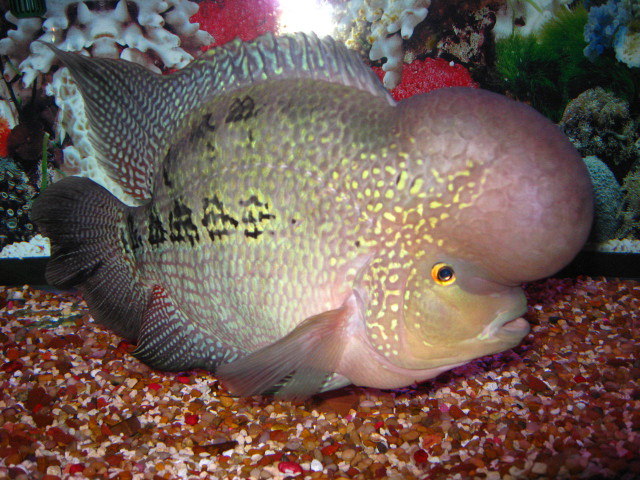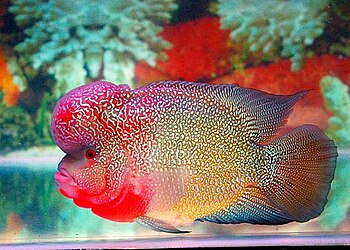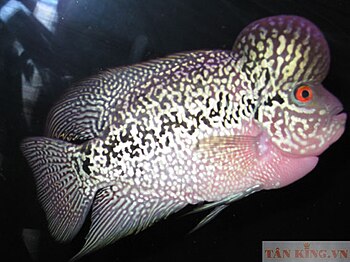 |
| Photo: Wikimedia Commons. |
The rampant crossbreeding of South American cichlids resulted to the flowerhorn cichlid. The new species of cichlid was developed in the mid 90's in Malaysia. The combination of the species used is still unknown except for those who made them. Both the male and female flowerhorn has the same appearance. One must be very keen to differentiate between the sexes. When the fish is approximately 10-12 centimeters, one can differentiate the male from the female flowerhorn by checking the anal pore. A U shaped anal pore signifies a female flowerhorn, while a V-shaped anal pore is for the male flowerhorn.
The flowerhorn sale is not greatly affected by the sex of the fish. The markings and the huge hump on the head appear both in the male and female flowerhorn. The black markings resemble the Chines characters at times. A fish with a pronounced marking will be considered very special. The hump on the head of the fish is believed to resemble the high- forehead of SHou Xing the Chinese God of Longevity.
The flowerhorn fish is easy to maintain. One must have an aquarium that would have an ample space for the fish to swim in. One to three flowerhorn fish can be kept in a spacious aquarium. If more than one fish is to be kept, however, there should be enough accessories or items that would make the territories of the fish separate and distinct. Small variations in the condition of the water would not bother the resilient fish much. A neutral or alkaline water is best in keeping the fish. Water with a lower pH would fade the color of the fish.
The flowerhorn cichlid is kept because people believe it is lucky or just merely because of its interesting appearance. No matter what the reasons are, flowerhorn cichlids are one of the favorites of an aquarist.
Quintus Macon is a freelance writer and a budding aquarist who owns a female flowerhorn.
Article Directory: EzineArticles
|



